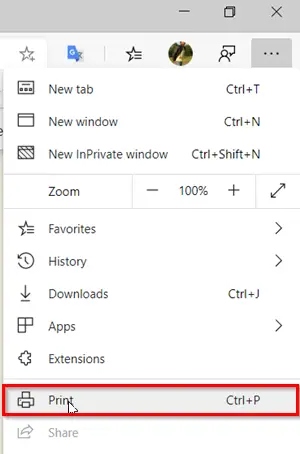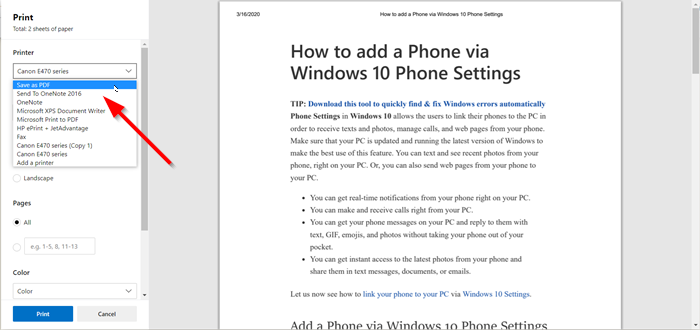Microsoft Edge, the new browser for Windows 10. has already made it to the elite list of impressive browsers. Among the ever-adding list of features, users seldom face an issue or two with Edge as their primary browser. Microsoft Edge (Chromium) accommodates a lot of changes in comparison to its predecessor – Edge HTML. For example, it offers a very easy way to save any web page as PDF file. So, in this post, we will walk you through the process to save a web page as a PDF file in Edge.
Save webpage as PDF file in Edge Browser
While browsing the web or reading an article on a website, we often come across a webpage that we need to save for offline research or sharing with someone for other purposes. Normally, you can just choose to copy and paste the link, but if you have the clutter-free image of the page, it even becomes easier to view it offline, mark up, or get a printed copy of it. The most flexible way to get all this done is to readily convert the page into a PDF file. Here’s how to do it!
- Open the Microsoft Edge web browser
- Visit the webpage you want to save as a PDF
- From there, click on the three-dotted menu button
- Then navigate to Print.
- Finally, select Save as PDF
- Make sure to choose the correct layout options.
- When you’re done, click on the Save button.
That should do it for saving webpages as PDF in Edge.
For most browsers, like Edge, the Print function happens to be the most effective way to save a webpage to PDF.

Go to ‘Settings and more‘ menu and select ‘Print‘ option. (Or simplye press Ctrl+P to bring it up)
In the new Print window that opens, hit the drop-down window under ‘Printer‘ heading.

Next, from the list of options displayed, choose ‘Save as PDF‘.
That’s all there is to it!
The Reading mode actually transforms your web page in a beautiful format that the PDF file hardly seems to be drawn out of the web page.
why the links in webpages are lost while saving it in pdf?
Buncha shyte this is.